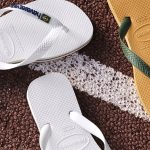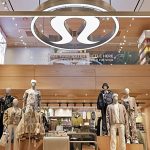According to the quarterly call of its parent, Helen of Troy, Hydro Flask saw “broad-based strength” in its second quarter, ended August 31, in domestic brick and mortar sales, driven by retailers increasing orders to replenish a more robust back-to-school season and healthy holiday ordering.
“On top of the current acceleration in pre-holiday ordering, we see healthy inventory retailer replenishment in line with a strong sell-through to those customers where we have visibility,” Julien Mininberg, CEO, told analysts on the call.
Internationally, Hydroflask “grew even faster,” primarily concentrated in Canada and the Asia Pacific.
New product introductions in the “Beyond The Bottle” classification contributed to Hydro Flask’s growth in the quarter as customers pursued more outdoor activities close to home in the current COVID environment. The brand also expanded into lunch boxes, lightweight coolers, insulated totes, and hydrated packs.
Hydro Flask’s bottle line, which includes tumblers, new colors and sizes in its Fall collection, helped support the brand’s “Just One More” strategy that encourages customers to try new colors, shapes, sizes, and categories.
Mininberg said Hydro Flask sees a strong appeal for its product assortment. “Consumer affinity for the Hydro Flask brand continues to be a strong tailwind. As one high-profile example, we’re very pleased to see Simone Biles using our popular new Hydro Flask USA bottle at the Tokyo Olympics,” said Mininberg.
Overall, revenues for Helen of Troy’s Housewares segment, including Hydro Flask and the OXO brands, increased 6.6 percent in the second quarter to $215.2 million, compared to $201.9 million a year ago.
An increase in its Organic business drove the growth of $13.1 million, or 6.5 percent, primarily from a rise in brick and mortar sales for the OXO and Hydro Flask brands due to high demand, a favorable comparative impact of COVID-19-related store closures, reduced store traffic, a soft back-to-school season in the prior-year period, higher sales in the closeout channel, and growth in international sales. These factors were offset by decreased online sales from the unfavorable comparative impact of a shift to online shopping in the prior-year period due to COVID-19-related store closures and a decline in club channel sales.
Operating income in its Housewares segment was $41.9 million, or 19.5 percent of segment revenue, compared to $45.4 million, or 22.5 percent, a year ago. The 3.0 percentage point decrease in segment operating margin was primarily due to a less favorable channel mix, higher inbound freight expense from rising freight rates and container supply shortages, increased distribution costs, increased marketing expense, and higher share-based compensation expense. These factors were offset by reduced annual incentive compensation expense and favorable operating leverage.
Adjusted operating income decreased 3.9 percent to $46.0 million, or 21.4 percent of segment revenue compared to $47.8 million, or 23.7 percent, a year ago.
Looking ahead, Helen of Troy raised its guidance for the Housewares segment and expects it to show growth of 9 percent to 11 percent for the year, up from 7 percent to 9 percent previously.
Companywide, Helen of Troy raised its overall guidance for sales and EPS for its fiscal year as second-quarter results exceeded expectations.
Consolidated sales in its second quarter decreased 10.5 percent to $475.2 million. The decline was due to a decrease in sales in the Health & Home segment as a result of EPA packaging compliance concerns and related stop shipment actions and a net sales revenue decline in Non-Core business from the sale of its North America Personal Care business during the second quarter of fiscal 2022.
In its other segments, Health & Home revenue decreased 33.1 percent to $141.5 million. The segment includes Vicks, Braun, Honeywell, and PUR. The decline reflects a decrease in brick and mortar and online sales of water filtration, air filtration and humidification products resulting from the EPA packaging compliance concerns and related stop shipment actions and a decline in sales of thermometers due to stronger COVID-19-driven demand for healthcare products in the prior comparative period.
Beauty net sales growth from its Core business increased 13.9 percent, primarily reflecting higher appliance sales from an increase in brick and mortar sales, growth in the volumizer franchise from continued high consumer demand, expanded distribution primarily in the club channel, and higher international sales. The segment includes Hot Tools and Drybar.
Net income was $51.3 million, of $2.11 a share, compared to $87.3 million, or $3.43, a year ago. The decline was driven by lower operating income in the Health & Home and Housewares segments, an increase in the effective income tax rate and higher interest expense, partially offset by higher operating income in the Beauty segment and lower weighted average diluted shares outstanding.
Adjusted EBITDA decreased 23.1 percent to $87.2 million.
Looking ahead, Helen of Troy expects consolidated net sales revenue for its fiscal year in the range of $2.02 billion to $2.07 billion, which implies a decline of 3.5 percent to 1.5 percent. Previously, the company expected consolidated net sales revenue in the range of $1.93 billion to $1.98 billion, which implied a decline of 8.0 percent to 5.5 percent.
Outside the Housewares segment, Health & Home net sales are expected to decline in the range of 20.0 percent to 18.0 percent for the full fiscal year, including 11.2 percent to 8.4 percent of decline related to the EPA matter. The forecast previously called for a decline of 27.0 percent to 24.0 percent, including 15.2 percent to 12.4 percent decline related to the EPA matter.
The Beauty segment is expected to show net sales growth of 7.5 percent to 9.5 percent, and the Beauty Core business net sales growth of 20.0 percent to 22.0 percent. Previously, guidance called for Beauty net sales growth of 4.2 percent to 6.3 percent and Beauty Core net sales growth of 17.0 percent to 19.0 percent.
Photo courtesy Hydroflask
















